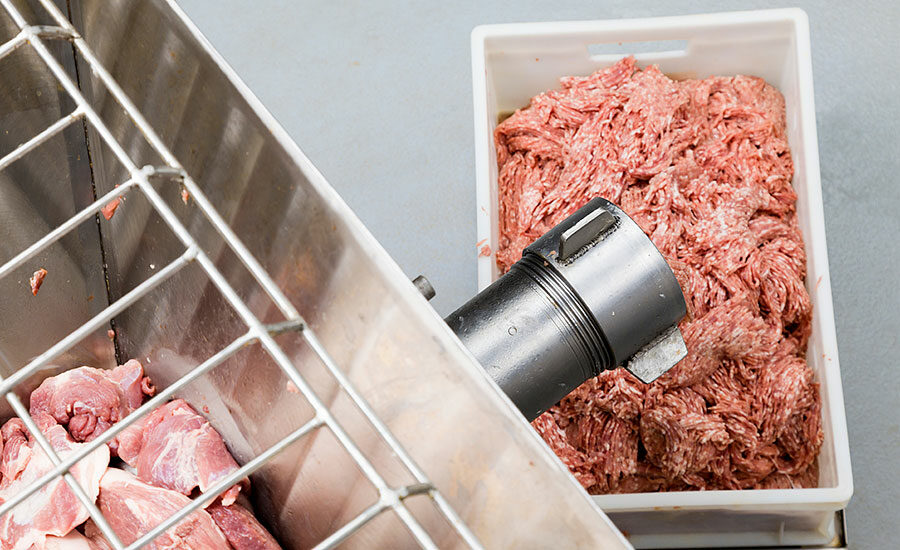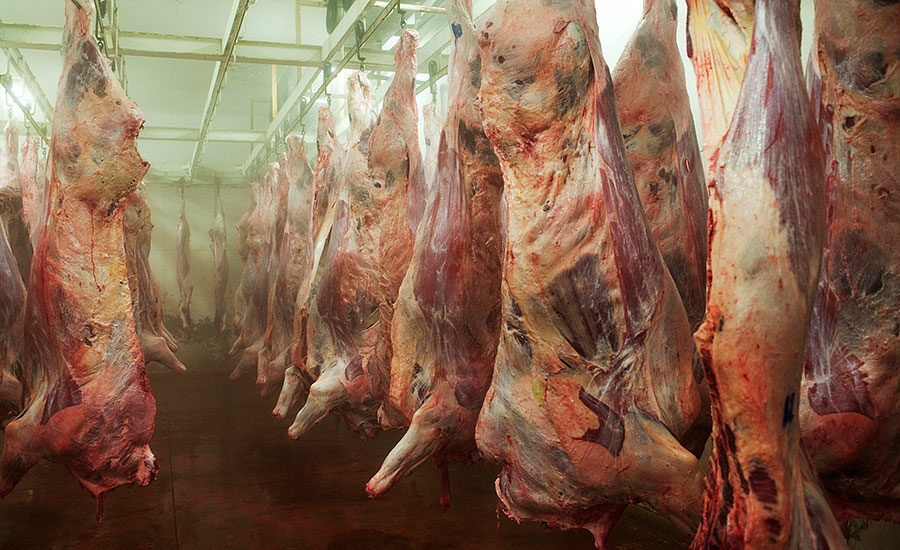Renew the commitment to eliminate E.coli




One of the biggest challenges in food safety in today’s beef processing industry is the reduction of E. coli contamination in ground beef.
In 1993, an outbreak of E. coli O157:H7 occurred in the Pacific Northwest, causing 400 illnesses and four deaths. The time had come and the public demanded change for safer ground beef products.
At the time, the industry relied on the USDA inspector. The FSIS inspection largely relied on sight, touch and smell, and agency officials and stakeholders called for a more “science-based” meat and poultry inspection system. In response, FSIS stepped up its research on the benefits of Hazard Analysis and Critical Control Points (HACCP), setting the stage for the most significant change in regulatory philosophy in the history of U.S. food inspection.
On July 25, 1996, FSIS issued its landmark rule, the HACCP Inspection Act. The rule focuses on the prevention and reduction of microbial pathogens on raw products that can cause illness. HACCP clarifies the respective roles of government and industry. Industry is accountable for producing safe food. Government is responsible for setting appropriate food safety standards, maintaining vigorous inspection oversight to ensure those standards are met, and maintaining a strong regulatory enforcement program to deal with noncompliance. HACCP was implemented in all FSIS- and state-inspected meat and poultry slaughter and processing establishments between January 1997 and January 2000. The Centers for Disease Control and Prevention have recognized HACCP as an important factor in the overall decline in bacterial foodborne illnesses since 1996.
Despite the attempts at the microbiological-based changes, the significant reduction that had been hoped for is still not within the grasp of the USDA, nor the industry’s food-safety efforts.
In 2012, CBS news reported, “An independent report concluded the largest beef recall in Canada’s history could have been prevented, finding a ‘weak food safety culture’ and ‘relaxed attitude’ to safety protocol at the XL Foods plant where the tainted meat was processed. XL Foods Inc. found itself overwhelmed with the recall that occurred.” Rumors claimed this cost to be nearly $50 million and one week’s entire production. This ultimately resulted in XL Foods eventually being sold to JBS.
On May 20, 2014, a major ground beef recall was issued because of possible E. coli contamination of nearly 2 million pounds of meat from a Detroit plant that was sent to restaurants in several states.
On Sept. 25, 2014, a Hereford, Texas, establishment recalled approximately 23,000 pounds of beef trimmings products because of potentially contaminated ground beef products.
The list goes on and on with new, unfortunate recalls daily and weekly.
What is the answer? In the last decade, the red meat industry has transformed its slaughterhouses to combat this potentially deadly type of food poisoning, adding huge chambers to scald carcasses and wash them in acid, steam vacuums to suck away microbes and elaborate gear to test hundreds of meat samples a day.
In all, the beef industry says it spends upwards of $350 million a year to keep harmful pathogens out of the meat it sells to the public. But even as expenditures keep rising, the industry appears to be losing ground.
This much is clear: Years after an outbreak at Jack in the Box restaurants made people aware that hamburgers could kill them, the American beef industry is still searching for a practical method to prevent the toxic E. coli strain from contaminating ground beef.
Large beef companies have spent tens of millions of dollars to prevent E. coli contamination. Most of the larger plants have digital recordings of the critical work areas that have the potential of cross contamination from the process or employee workstations.
Chemical interventions are applied at various stages of the processes. Chemicals that are chlorine-based are often used to sanitize produce and surfaces within produce processing facilities, as well as to reduce microbial populations in water used during cleaning and packing operations.
The leadership of the meatpacking business may have overlooked one of the most obvious elements: the work is done by people.
Upton Sinclair in 1906 exposed the meat industry and the treatment of the employees within the large meatpacking houses. If you explore this element in detail, you may find many of the management tactics still in use to some extent.
Going back not as many years, in the 1980s, management consultants researched American workers and found that the most important factor in driving employee engagement and success was the appreciation for a job well done. It was more important than wages, working conditions or benefits.
In 1982, Tom Peters and Robert Waterman published the book “In Search Of Excellence,” in which lessons from America’s best-run companies showed a people-oriented spirit and employee involvement drove them to the top.
There was some emphasis among the nation’s leading meat companies on more employee and management training during this timeframe, but when the recession hit, much of that training went on the shelf. Attention turned to profits during that time of economic turmoil. Some managers still have the attitude, “It’s a packing house; what do you expect?”
So, is the industry going backward with the management of people skills and human behavior at work, which is clearly such a critical factor in quality and safety?
At this point in time, I don’t believe we have a workforce that feels appreciated, nor does that workforce understand the big-picture significance of its skilled labor, the food safety impact on the families here and abroad via the export markets that we serve — not enough to consistently produce clean and safe beef.
Would it be worth the time for a rebirth of quality-improvement and people-skills training to ensure our children have safe food? Focus should return to zero defects — down on the assembly line. Processors and packers must renew a focus on zero defects, not unlike the focus of the modern Six Sigma Quality movement.
That said, zero defects is not something that originates on the assembly line. To create a manufacturing process that has zero defects, management must set the tone and atmosphere for employees to follow. If management does not create a system by which zero defects are clearly the objective, employees are not to blame when things go wrong and contaminations occur. The benefit for a company to embrace such a system is a dramatic decrease in wasted resources and potential recalls and a commitment to producing safe products for our children.
A quality-improvement rebirth could exhibit conformity to certain specifications already set forth by the organizations SSOPs, HACCP plans and management and not some vague concept of “goodness.” Although quality and quality management does not have a formal definition, most agree that it is an integration of all functions of a business to produce high-quality products through continuous improvement efforts of all employees.
Is this the key element that has been ignored, or forgotten in the midst of scientific answers? When 90 percent of the work is performed by people, where should the improvement be?
Quality management revolves around the concept of meeting or exceeding customer and regulatory requirements with all products and services. Achieving high quality is an ever-changing, process that involves every aspect of the company: processes, environment and people. The whole workforce, from the CEO to the line worker, must be involved in a shared commitment to improving quality.
Looking for a reprint of this article?
From high-res PDFs to custom plaques, order your copy today!










